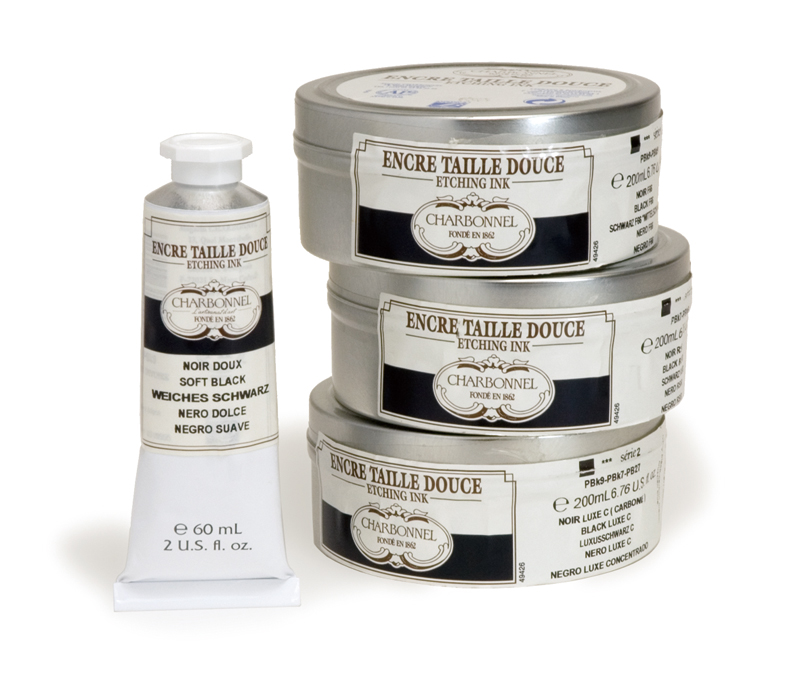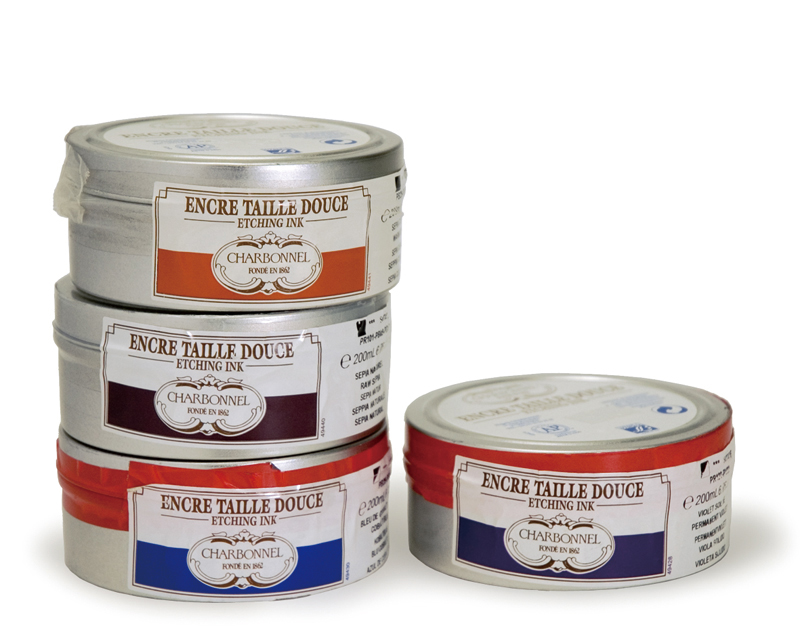Copperplate Ink
銅版画用インク
Dōhangayōinku
CATEGORIES
Copperplate ink is an oil-based ink used in intaglio printing (ōhan), which can be made by mixing the paint with extender pigments such as aluminum hydroxide and burnt linseed or plate oil (as mediums), then knead them together.
Copperplate ink comprises mostly the same components as oil paints. As it is used on copperplate engravings, however, it requires a sufficient degree of hardness, ease of wiping, and ease of ink-paper transfer. The medium substance of linseed oil is heated and burnt to expel the fatty content. By stirring in this linseed oil, a robust, not-too-sticky, and sufficiently hard ink is produced. When making homemade copperplate ink, first place the color paint on the ink-mixing table and hollow out the center. Pour in the plate oil bit by bit and then, with a spatula, break apart and insert the surrounding paint, mixing it until thoroughly kneaded. When the paint and the fatty oil have blended sufficiently, knead them together while gently moving the glass stirring bar (the muller). Then, tightly seal the resulting ink in order to prevent it from coming into contact with air. Finally, let it sit and allow it to mature until the pigment and the fatty oil blend together. In Japan, numerous manufacturers (including foreign manufacturers) sell copperplate-engraving products on the market. Among them, the copperplate engraving inks of French company Charbonnel come in numerous types (even among the black inks), each with their own particular characteristics of shading (iromi), hardness, sharpness (kire), and so forth. It is advisable to use them separately according to their respective images, techniques, and so forth. Also, there is a wide variety of colored inks now available to consumers.
When making prints, carry the ink to the ink-mixing table as you load it and, with a spatula, knead it thoroughly until a gloss emerges. With a rubber spatula, roller, dabber, or rubbing pad, load the ink into the concave sections. After you have wiped away the extra ink with cheesecloth or rayon, you are now ready to print with the press machine. If the ink viscosity is hard, use plate oil; if it is too soft, adjust the hardness after inserting the loading pigment. The ink takes time to dry—in two days it will be dry enough to not smudge onto your finger. However, it takes considerable time to dry completely. Copperplate engraving is available for purchase at art supplies stores that carry items used in block prints.
 Copperplate ink (black)
Copperplate ink (black) Copperplate ink (colored)
Copperplate ink (colored)
